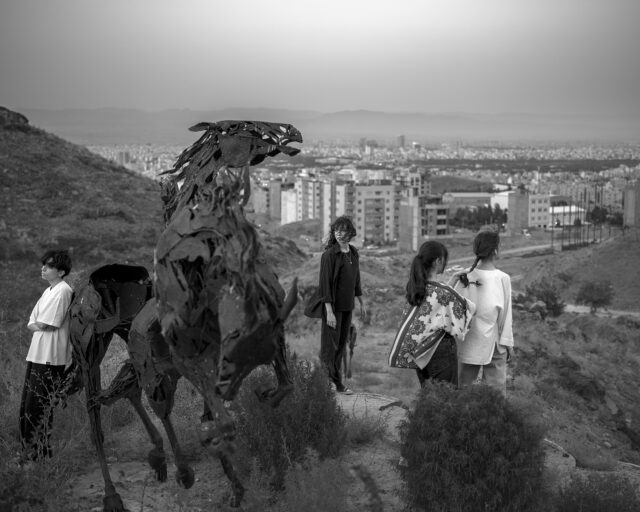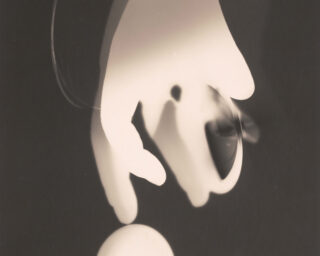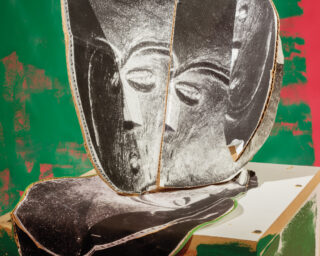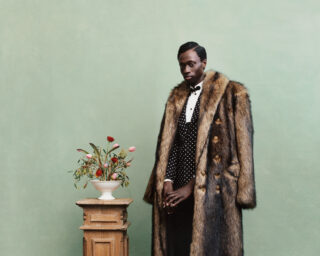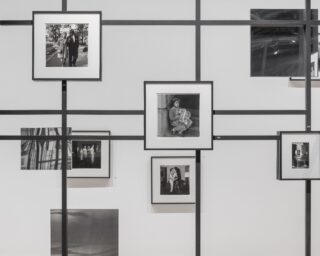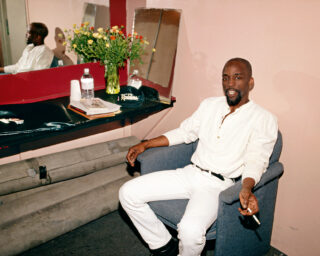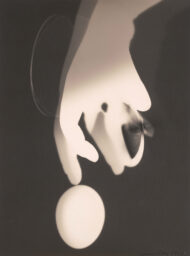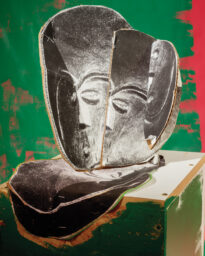2009 Portfolio Prize Winner: Alexander Gronsky
Untitled, 2009, from the series The Edge
Photographing areas of Moscow that are neither entirely urban nor rural, Alexander Gronsky reveals the ambiguous spaces in which city dwellers relax and find solace in nature. These are certainly not idyllic settings; the edge of the city looms in the background with its faint skyline and construction cranes, leaving the viewer ever aware that these natural settings exist within yet a vaster urban context. Both the man-made and wild spaces look quite abstract—not inhospitable, as much as unknowable and vast.
The people—figures, really—are detached even in their revelry. They interact with each other and with the land, but do not seem particularly connected. They’re not so much lonely or isolated, as singular. Snow would seem to unify the landscape and connect the figures, covering and abstracting every surface while obscuring the distinctions. Even so, here it serves more to highlight the perimeters of the figures—ducks appear as a group of individuals in the snow, rather than a flock. Such separation is emphasized again and again between the figures themselves, as well as between them and the environment they inhabit.
Gronsky reminds us of the impossibility of truly connecting with or knowing nature (or each other). A woman runs from a partially frozen pond toward a small group waiting for her, leaving a ripple in the water soon to disappear into the larger surface; the landscape is unmoved by human vulnerability, and the figure’s exposure to it does little to truly open her to the wilderness therein. One gets a sense of the boundless depth beneath the surface of both the human spirit and the land, but even here, such infinity is not knowable or intimate. Walt Whitman describes this dual paradox of a connection between individuals and nature in Whoever You Are Holding Me Now in Hand: “For these leaves and me you will not understand, / They will elude you at first and still more afterward . . . / Even while you should think you had unquestionably caught me, behold! / Already you see I have escaped from you.” The cardboard box containing two figures in the forest illustrates this further. The shelter holds them, binding them together and offering more intimacy than the city structures. Yet, even as the two lay next to each other, they do not seem to possess or grasp one another, and the shelter, though private, is feeble against the nature surrounding it. Even in this intimate setting, the wilderness stays large and inaccessible. The individuals, too, remain ultimately distinct and solitary, though they continue to strive to connect with their natural surroundings and each other.
Just as Gronsky’s work observes these types of boundaries and divides, it also explores the human drive to transgress them. Swaths of weeds and ground puncture the snow, and footprints reveal improvised pathways. We are reminded that the most delicate and intricate creatures co-exist with the bleak, abstract landscapes. The city dweller’s quest may be impossible, but it is deeply human, in its searching. In Gronsky’s visual world, and in ours, the world and its inhabitants can be experienced, but not fully comprehended. Perhaps, as Whitman suggests, “For thus, merely touching you, is enough—is best, / And thus, touching you, would I silently sleep and be carried eternally.”
















All photographs from the series Pastoral and The Edge. Courtesy the artist.











